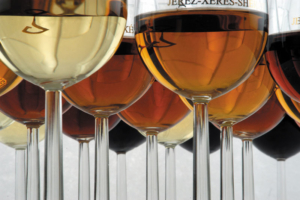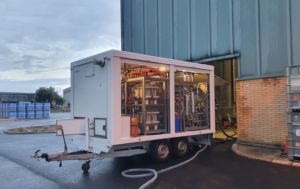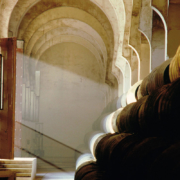Jerez: a universe of very special wines – can one technology stabilize them all?
The mysterious world of Jerez wines seems to be out of time. Its century-old traditions provide us with wines as delicious as unique. No wonder then, that Jerez winemakers are careful when it comes to modern winemaking technologies. The STARS® tartaric stabilization technology has recently proven itself able to provide an alternative to cold stabilization for the whole range of Jerez wines.
 Unique winemaking techniques
Unique winemaking techniques
Jerez wines start out, for most of them, just like any white wine of the year. At the end of vinification, most of it receives a fortification to reach 15% alcohol before it joins directly the solera system of American oak barrels, where it is mixed with older wines and submitted to a flor aging. Flor (“flower”) is the name given to the natural veil of indigenous yeasts that forms on top of wine when exposed to oxygen in the Andalusian bodegas. It causes a biological aging of the wine (as opposed to oxidative aging) and is one of the keys to the exceptional tastes of Jerez wines. Another exceptional characteristic of Jerez wines is their diversity. Jerez winemakers have been very creative, mixing and matching a variety of dry wines and natural sweet wines with Jerez brandies. As a result, Jerez holds a whole universe of wines, from the driest to the sweetest, the palest to the darkest, the subtlest to the heartiest.
A pain point in a century-old process
No matter how diverse, Jerez wines share common points: a limited set of varietals, solera and flor, the impact of barrel aging, and, of course, the maestria of Jerez winemakers. Another common point is that, in spite of their relatively long aging in American oak barrels, Jerez wines still need to undergo tartaric stabilization. And that step can get tough. With high alcohol content (over 15%), those wines have a low congelation point. As a result, static cold stabilization is time consuming, and continuous cold stabilization is energy consuming. No wonder then that alternatives for tartaric stabilization would generate some interest in Andalusia. This is what happened with the STARS® technology: over a year ago, a famous Jerez winery was the first ever to try it out on a manzanilla, a palomino wine from the Sanlucar de Barameda district. The trial was a success and in October 2020, in another round of trials, 2 other great Jerez names successfully stabilized a range of wines with STARS®: cream, oloroso, fino dulce, fino sobretabla… The local support and advocacy of SECOVISA was key to organizing the trials, which were realized with a Gemstab Servicios Vinicolas trailer.
 STARS®: a viable solution for the whole range of Jerez wines
STARS®: a viable solution for the whole range of Jerez wines
In spite of being undeniably exceptional and diverse, and in spite of the relative difficulty to stabilize them with cold, Jerez wines are easily stabilized with STARS®. STARS® is a membrane-based technology that extracts the ions that are responsible for tartaric precipitation: tartrate, potassium and calcium. It is a continuous, tank to tank process that happens at winery temperature – so, unlike with cold stabilization, alcohol content doesn’t impact the efficiency of the process. Sugar content also does not affect STARS® stabilization. STARS® offers winemakers a precise control on the level of ion extraction, all while preserving wine quality. Finally, it seems Jerez winemakers have found an alternative to cold stabilization that makes the tartaric stabilization step painless and as smooth as a cream.


